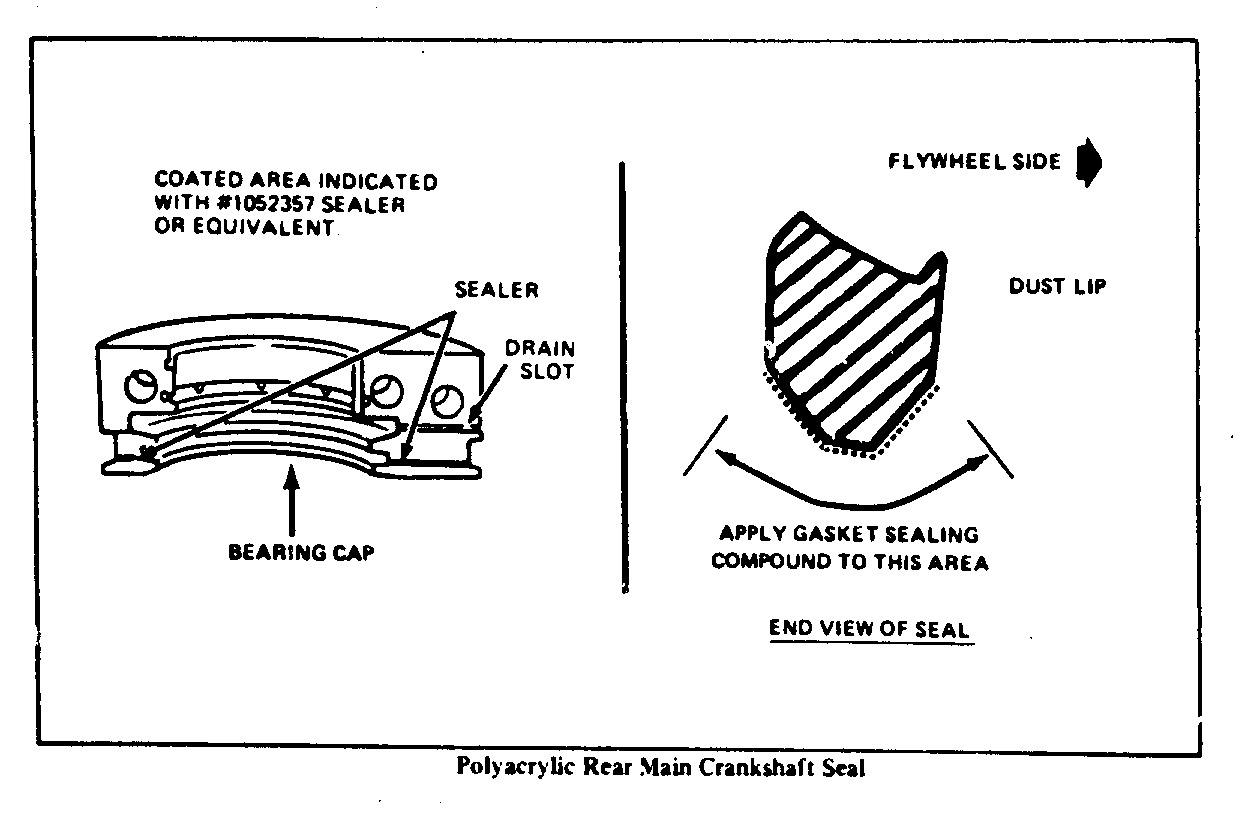REAR MAIN OIL SEAL LEAK INFORMATION

VEHICLES AFFECTED: 1982 'J' Series With 1.8L L4 Engine (Code G)
A rear main crankshaft seal replacement procedure was published in 1982 Product Service Bulletin 6-147A and revised February 28/83. This procedure advised of the use of a rear main polyacrylic seal in the 1982 1.8L engine to correct oil seal leakage. Should you experience continued leakage after replacement of the rope seal with the service replacement polyacrylic seal, Part No. 14071878, then refer to the following possible causes:
1. Use of incorrect adhesive or excess adhesive blocking the rear main cap drain slot will cause leakage. Only a very thin bead, 1 mm (1/32 of an inch) of anaerobic sealer, Part No. 993010, should be applied to the bearing cap-to-engine block surface. Apply a very thin coat of anaerobic sealer to the seal groove or groove contact area to the seal. See Figure.
2. A crankshaft seal surface area that has been nicked or damaged will require crankshaft replacement to avoid leakage.
3. Oil pan-to-block sealing - DO NOT APPLY RTV to the rear oil pan mating surface. Use of any sealer on the rear oil pan seal or pan seal groove of the main bearing cap will prevent proper seal compression which may result in oil leakage or pan deformation. The oil pan rail bead of RTV should only slightly overlap the ends of the rear oil pan seal where the RTV will not interfere with the compression grooves on the seal.
When these procedures are observed, the seal replacement listed in the above described Product Service Bulletin should correct an oil leak condition. Other possible areas of oil leak sources at the rear of the engine are the cam plug, oil galley screw and distributor bore. The use of a black light is encouraged as an improvement over white spray powder to locate the source of oil leaks.

General Motors bulletins are intended for use by professional technicians, not a "do-it-yourselfer". They are written to inform those technicians of conditions that may occur on some vehicles, or to provide information that could assist in the proper service of a vehicle. Properly trained technicians have the equipment, tools, safety instructions and know-how to do a job properly and safely. If a condition is described, do not assume that the bulletin applies to your vehicle, or that your vehicle will have that condition. See a General Motors dealer servicing your brand of General Motors vehicle for information on whether your vehicle may benefit from the information.
